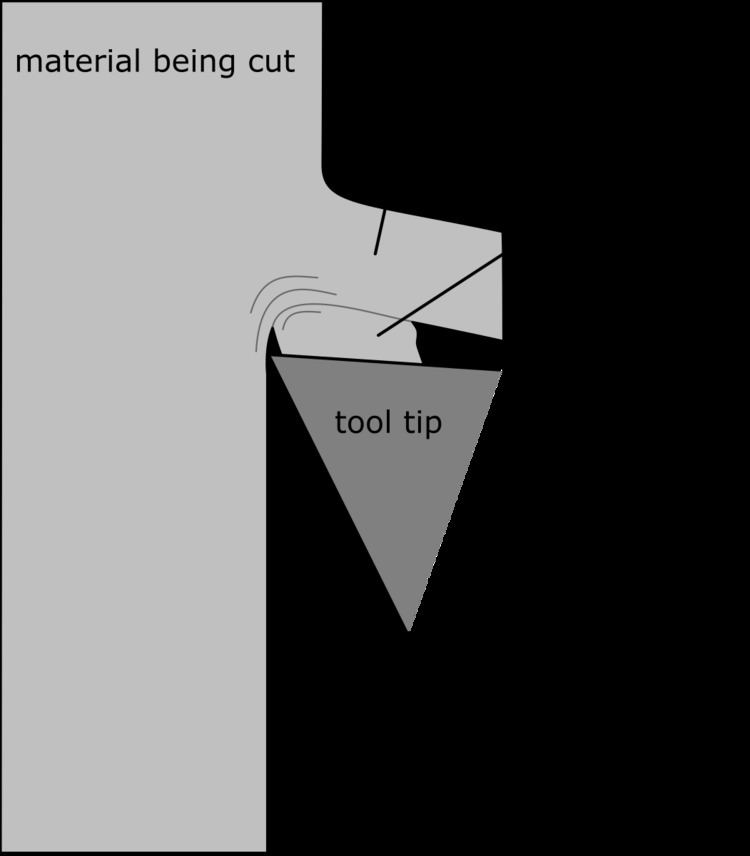 | ||
In single point cutting of metals, a built up edge (BUE) is an accumulation of material against the rake face, that seizes to the tool tip, separating it from the chip.
Contents
Formation
Because shear is strongest at the contact surface with the cutting tool, the first layer of metal impacting and seizing on it work-hardens more than the rest of the volume of metal. As a consequence of this work hardening, this first layer of metal is stronger than the adjacent metal moving away from the workpiece. Effectively, said first layer becomes part of the tool. The process repeats itself and, after some time, a built up edge (which could be several hundred micrometres thick) forms.
The conditions necessary for a noticeable edge to build up are that:
Effects on the cutting process
The built up edge effectively changes tool geometry and rake steepness. It also reduces the contact area between the chip and the cutting tool, leading to:
However, the formation of BUEs have negative effects on the quality of the workpiece, specifically:
